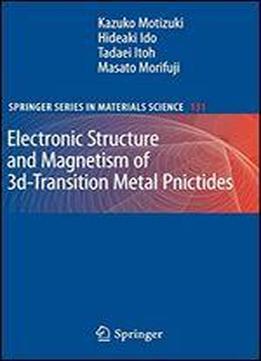
Electronic Structure And Magnetism Of 3d-transition Metal Pnictides (springer Series In Materials Science)
by Kazuko Motizuki /
2009 / English / PDF
5.8 MB Download
This book describes in 2 parts experimental data with simple explanations (Part I) and itinerant electron theories (Part II) about magnetism and its related properties of 3d-intermetallic compounds. Unlike 3d-metal alloys and oxides, theoretical as well as experimental studies on 3d-intermetallic compounds such as 3d-pnictides and chalcogenides, on which we focus in this book, seem unfortunately delayed. The objective of this book is to motivate active studies in this ?eld in the future. We discuss in detail magnetic and related properties of the 3d-transition-metal pnictides and chalcogenides, which include the intermetallic compounds expressed as MX and M X, and their mixed compoundsM M X, MX X and M M X, 2 1?x x 1?y 2?x y x where M (M)isa3d element and X (X ) a pnicogen (P, As, Sb, and Bi) or a chalcogen (S, Se, and Te). Most of the MX-type compounds crystallize either in the hexagonalNiAs-type structure or in the orthorhombicMnP-type structure which is regarded as a distorted NiAs-type structure. Crystallographic phase transition b- ween the NiAs- and the MnP-typesoccursin some of MX-typecompoundswhen the temperaturechanges. The M X-type compoundscrystallize in the tetragonalCu Sb- 2 2 typestructure.Asdescribedin detailinthisbook,manyofthecompoundsmentioned aboveexhibitveryinterestingmagneticandcrystallographicphasetransitionscaused by various means such as change of temperature, applications of external magnetic ?eld or pressure, and change of the composition x in the case of mixed compounds.











